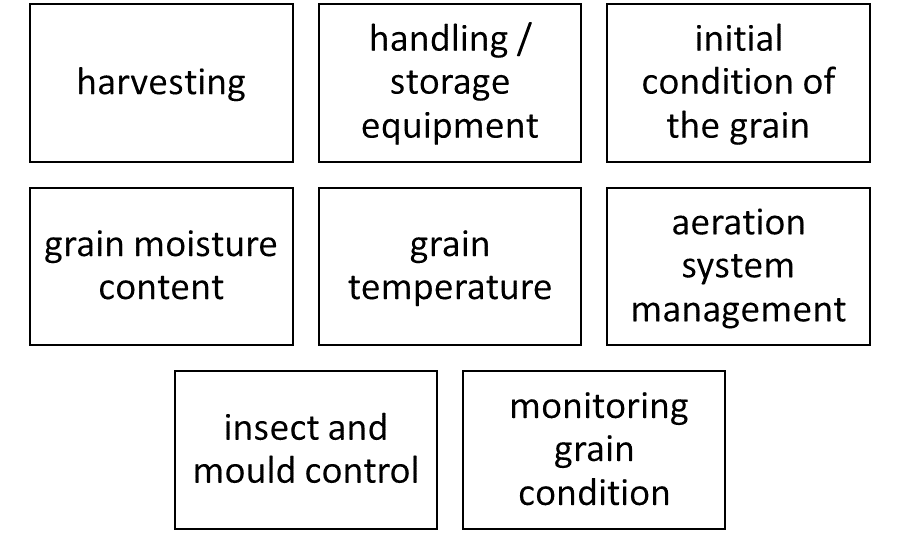The goal of postharvest grain drying, handling, and storage operations is to preserve the harvest quality of the grain and to add value by removing impurities and identifying and segregating lots with special characteristics when appropriate. For agricultural products, quality loss may occur due to poor drying techniques, improper handling, or lack of proper storage environments resulting in deterioration from cracking, splitting, mould growth, insect damage, sprouting, loss of germination, or dry matter loss from respiration. Large grains such as corn — especially when dried at high temperatures — are particularly susceptible to physical damage during handling. Physical damage also makes grain more susceptible to invasion by storage fungi and insects.
All postharvest operations attempt to maintain the initial quality of the harvested grain. During storage, grain must be protected from deterioration or attack by moulds, insects, rodents, and birds. Drying and handling operations must prevent physical or chemical deterioration. The physical protection provided by modern grain storage structures should eliminate serious bird and rodent damage. Moulds and insects cannot be physically excluded from grain with current storage designs. They can be controlled through grain temperature and moisture management.
Some grain will be stored for many months or even more than a year due to low grain prices. Maintaining grain quality during this extended storage will require extra care and management.
Grain that will be stored for an extended time needs to be good quality grain.
The outer layer of a grain kernel is the pericarp, or seed coat, and provides protection for the kernel. If the pericarp is damaged, the kernel is more susceptible to mould growth and insect infestations. This reduces the expected storage life of the grain. Broken kernels and foreign material should be removed by cleaning the grain before storing it. Segregation based on size and density occurs as grain flows into storage. Fines accumulate in the middle unless a functioning distributor spreads them throughout the grain. Unloading some grain from the centre of the bin will remove some of the fines and help level the grain in the bin. Also, immature kernels have a much shorter expected storage life. Grain test weight may be an indicator of maturity and storability.
Assure that the storage facility is clean, and insects are not living in aeration ducts, under perforated floors, or in handling equipment or debris around the facility. Fumigate the empty bin to kill insects under the floor or in aeration ducts if an infestation occurred during the previous year. Also, consider applying an approved residual bin spray and a grain protectant to repel potential insect infestations if storing grain during warmer portions of the year.

Grain quality will not improve during storage. At best, the initial quality can only be maintained. When stored grain goes out of condition, it is usually the cumulative result of several interrelated management factors that include:

An effective management program greatly enhances the likelihood of maintaining top quality grain.